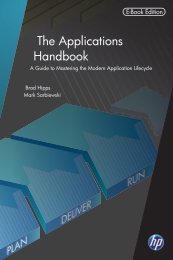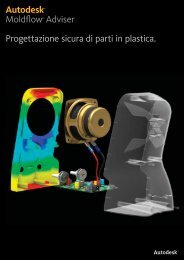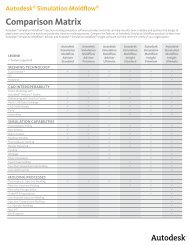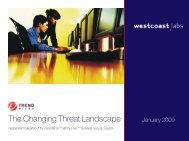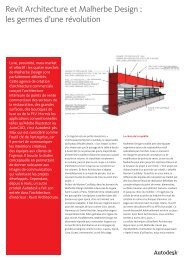red hat enterprise virtualization performance: specvirt ... - Zift Solutions
red hat enterprise virtualization performance: specvirt ... - Zift Solutions
red hat enterprise virtualization performance: specvirt ... - Zift Solutions
You also want an ePaper? Increase the reach of your titles
YUMPU automatically turns print PDFs into web optimized ePapers that Google loves.
As shown in Table 2, RHEV also leads VMware in the two- and four-socket server category<br />
and has the only published scores for eight-socket servers, including the single server with<br />
the highest overall <strong>performance</strong> (8956) and the highest number of performant virtual<br />
machines (552 VMs).<br />
# of CPU Best VMware SPECvirt_sc2010<br />
score<br />
Best RHEV SPECvirt_sc2010 score<br />
2 1878@120 2144@132<br />
4 3824@234 4603@282<br />
8 N/A 8956@552<br />
Table 2<br />
CONSIDERING COST/PERFORMANCE<br />
When deciding which <strong>virtualization</strong> solution to deploy, it is important to consider not only the<br />
raw <strong>performance</strong> of the platform but also how much it will cost to achieve t<strong>hat</strong> <strong>performance</strong>.<br />
Like all Red Hat products, RHEV is sold on a subscription basis. Unlike proprietary software,<br />
there is no high upfront license fee. Instead, you pay per socket per year for the software you<br />
use.<br />
RHEV has always been less expensive than VMware on a one year and three year basis. (See<br />
the separate Red Hat Enterprise Virtualization for Servers: Competitive Pricing Guide for<br />
more details.) With the release of vSphere 5 in July 2011, VMware introduced the concept of<br />
licensing virtual RAM (vRAM). With vSphere 5, you now need to license the greater of either<br />
(a) the number of socket licenses or (b) the number of licenses needed for the vRAM on<br />
running virtual machines.<br />
For this paper, the three-year costs for the 21 submitted SPECvirt_sc2010 scores t<strong>hat</strong> were<br />
published as of Jan. 1, 2012 were compa<strong>red</strong>. Each SPECvirt_sc2010 submission contains<br />
detailed information on the number of sockets on each tested system as well as the vRAM<br />
configuration of each virtual machine. This information was used to price RHEV, vSphere 4<br />
(which was licensed only per-socket), and vSphere 5 (which requires the greater of the persocket<br />
or per-vRAM licenses).<br />
The cost to license the 21 listed environments for three years was calculated, and then the<br />
calculated license cost was divided by the <strong>performance</strong> value of the SPECvirt_sc2010 score<br />
to calculate dollars per SPECvirt_sc2010 ($/SPECvirt_sc2010 <strong>performance</strong>).<br />
For example, in the first score listed in the results page at<br />
www.spec.org/osg/virt_sc2010/results/<strong>specvirt</strong>_sc2010_perf.html, the SPECvirt_sc2010<br />
score 2721@168 was achieved on a 4 socket system (per the Physical Configuration section in<br />
the Full Result Disclosure) running 476GB of vRAM (calculated by summing the Memory<br />
www.<strong>red</strong><strong>hat</strong>.com







